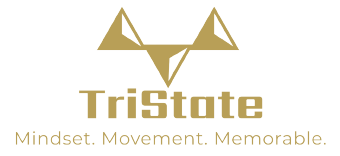Peaking for Competition: A Coach’s Guide to Tapering and Mindset
Peaking for Competition: A Coach’s Guide to Tapering and Mindset
When it comes to peaking for a meet, one of the biggest mistakes athletes make is thinking they need to lift heavy constantly to prove they’re ready. And for coaches, it’s assuming every athlete’s taper should look the same. The truth is, peaking is more than just chasing heavy lifts—it’s a calculated phase built on timing, confidence, and recovery.
Understanding the Purpose of a Peak
Athletes typically get two to four true “peaks” a year. That means your training needs to be structured around key meets, not constant max-out sessions. A peak is not about ego—it’s about executing your best lifts when it counts.
How We Taper at TriState
For most athletes, we begin tapering about two weeks before the meet. Here’s what that looks like:
Volume drops while intensity stays high on key days (90%+ efforts).
Heavy days are for full lifts
Back-off sessions hover around 60–75%, focusing on speed and technique.
Pulls from blocks or hangs may replace full lifts to reduce strain, especially from the floor. On back off days
Squatting is maintained, not pushed—just enough to stay primed without chasing new PRs.
Around 10 days out, we typically push one last heavy session. For newer or intermediate lifters, we’ll often target their second attempt and even touch their third if confidence is key.
Individualizing the Peak
Beginners & Youth: The goal is confidence. These athletes will rehearse all three attempts in training. We prioritize consistency and familiarity, not surprises.
Masters: Recovery takes priority. Heavy work is done earlier—10–12 days out—and taper days are extended to ensure full readiness.
Elite Lifters: These vary most. Their peak depends on age, weight class, meet importance, and training age. Take time to learn what gets the most of of your athletes.
Do We Change Nutrition or Recovery?
Honestly—no drastic changes. Your nutrition, sleep, and recovery habits should be dialed in long before a peak begins. Cutting weight or changing diets two weeks out is risky and can backfire. Same goes for new mobility routines—if it’s not part of your plan already, don’t throw it in now.
Mindset: Coaching the Platform Before You Step On It
Starting 10 days out, I ask athletes to visualize every part of their meet:
Chalk your hands.
Walk to the bar.
Set up with confidence.
Feel the nerves, the lights, the pressure.
Why? Because meet day feels different. It’s just you and the barbell—judges in front, crowd behind. The more you’ve rehearsed the mental rep, the more likely you are to own the moment.
Final Takeaway
Peaking is a skill. It’s as much about trust and timing as it is about strength. Coach the athlete, not just the program. Prepare them for the platform, not just the numbers. And when meet day comes, let all the prep show in one calm, confident lift at a time.

